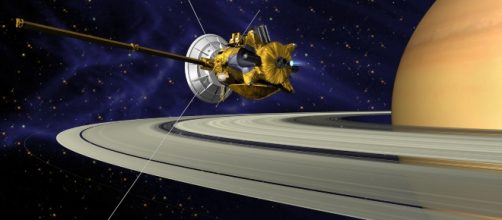In 10 days, NASA’s Cassini Space Craft will proceed with the final leg of its mission. The bus-sized probe will conclude decades of orbiting the planet Saturn with a suicidal trip into the planet’s atmosphere.
The success of Cassini and its lander passenger
NASA’s Cassini space craft was named after Giovanni Cassini. The astronomer is best known for discovering the gap in-between Saturn’s rings as well four of the planet’s moons.
The space craft began its billion-mile journey from Earth to Saturn on October 15, 1997. According to the Washington Post, Cassini also carried a passenger.
On board was European Space Agency’s Huygens Lander which was named after the Dutch scientists who discovered Titan.
Cassini and its passenger arrived in Saturn’s orbit on July 2004. Several months later, Huygens took off and landed near one of Titan’s liquid methane lakes. While Pioneer and Voyager merely passed by in 1979 and 1980, respectively, Cassini became the first spacecraft to orbit Saturn. Its passenger, the Huygens lander also made history after becoming the first craft to land on another planet’s moon.
In a span of 20 years, Cassini became one of the most successful space missions in history. The space craft explored the formation of Saturn’s ring and documented its behavior. Its probe revealed that the rings were filled with three dimensional texture including bumps which were as big as the Rocky Mountains.
The craft also took man’s first close up view of Saturn’s hexagonal North Pole storm. The space craft also discovered the massive 5,000-mile wide hurricane in the planet’s South Pole. Cassini also served as the key to solve the mystery behind the unique coloration of the moon Iapetus. Cassini’s biggest accomplishment was the discovery of potential life indicating molecules in Titan.
Project scientist Linda Spilker who worked with Cassini since 1988 said that the space craft’s legacy that is hard to match.
The end of Cassini’s era
Realizing that the craft was running out of fuel in 2009, the scientists at NASA's Jet Propulsion Laboratory gathered together to discuss Cassini’s future. Leaving it floating in space is not an option since the craft may crash into and contaminate potential habitable moons.
The group agreed to launch Cassini into one final mission.
All scientists who have worked for the mission in the past 30 years will gather together to witness the end of Cassini’s era. Using Titan’s pull, Cassini will complete 22 close-in orbits of Saturn before finally burning out as it plunges into the planet’s atmosphere. According to CNet, Cassini's suicide dive will happen on September 15.


